Due to its hot summers and cool winters, planning your kitchen or bathroom renovation in Australia is key to making your home comfortable. Good plumbing is at the heart of this, affecting water use and how cosy your home feels all year round. To help you maintain your Australian home no matter the weather, here Read more
Eco-Friendly
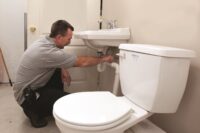
Due to its hot summers and cool winters, planning your kitchen or bathroom renovation in Australia is key to making your home comfortable. Good plumbing is at the heart of this, affecting water use and how cosy your home feels all year round.
To help you maintain your Australian home no matter the weather, here are some plumbing tips that will make your spaces practical and durable, saving you time and money in the long run.
Understand Your Plumbing Layout
Before making any renovations, you should understand your plumbing layout first. This means figuring out where all your pipes and fixtures are located. A handy tip is to look at your house plans for guidance. You could also seek assistance from a professional plumbing service near you.
For example, if you live in Perth or nearby areas, Alpha Sealed WA is just one of many other trusted repair specialists in Australia you can rely on. These professionals can easily map out your system, clarifying the best ways to proceed with upgrades or repairs.
Having the right knowledge ensures that your renovation efforts are both effective and efficient, avoiding unnecessary complications.
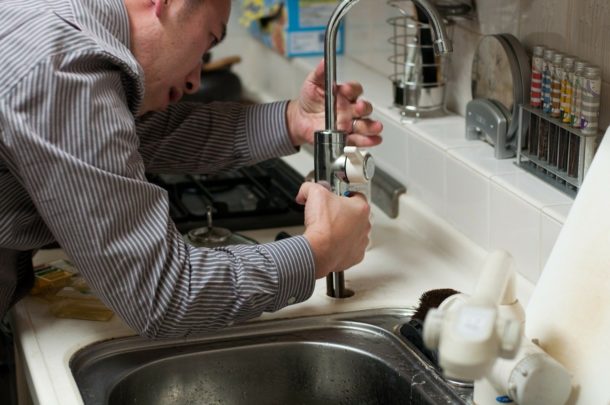
Budgeting for Plumbing
Plumbing improvements can be expensive. So, to prevent any financial surprises, it’s advisable to familiarise yourself with these expenses early in the planning process. Begin by itemising your project’s tasks, from simple fixture replacements to extensive pipe overhauls. Early on, solicit detailed quotes from several reputable plumbers to compare costs and services.
Anticipating unexpected expenses is also an essential part of effective budgeting. Therefore, reserve a portion of your budget for issues that may arise during the renovation process. This proactive approach helps mitigate stress and prevents project delays, ensuring you maintain control over your finances.
Additionally, investing in quality materials and skilled labour upfront can save money in the long term by reducing the need for frequent repairs or replacements. Remember, a well-budgeted project is a smoothly executed project, leading to lasting satisfaction and functionality in your home’s plumbing system.
Choosing the Right Materials
Investing in high-quality plumbing materials reduces maintenance and replacement costs over time. Look for durable, efficient options that can withstand Australia’s variable climate. Materials like stainless steel for pipes and fittings are known for their longevity and resistance to corrosion.
Stainless steel is an outstanding choice due to its durability and resistance to corrosion. Besides stainless steel, copper is also known for its long-lasting qualities. Meanwhile, PEX piping is considered for its flexibility and resistance to breaking under cold conditions.
These materials ensure your renovation project remains both reliable and aesthetically pleasing over time, avoiding the frequent updates that lesser quality materials might necessitate.
Incorporating Eco-Friendly Solutions
Choosing eco-friendly plumbing fixtures is a smart move, as these fixtures can help you save water and reduce your bills. For bathrooms, low-flow showerheads, dual-flush toilets, and water-saving faucets can significantly lower your water usage, benefiting your wallet and the environment.
Meanwhile, tap aerators and efficient dishwashers greatly affect kitchen water use. These choices benefit the planet and make your home more sustainable and cost-effective in the long run.
Avoiding Common Mistakes
Making mistakes during plumbing renovations is easy, but avoiding them can save you time and money. One common error is not getting the proper permits for major plumbing work, which can lead to issues with local regulations. Another mistake is overlooking the need for updated fixtures to match new plumbing layouts, leading to mismatches that can affect both function and design.
These oversights not only increase costs but can also delay your renovation project. Always double-check requirements and compatibility to ensure your renovation goes smoothly and doesn’t face unnecessary hurdles.
Professional Inspection
It is essential to have a professional inspect your plumbing before finishing the job. An inspector ensures everything is up to code, checking for leaks, proper installation, and overall functionality.
This step can catch potential problems early, preventing costly repairs down the line. For homeowners, this means peace of mind knowing their plumbing is safe, efficient, and correctly installed. It’s a protective measure that safeguards against future issues, ensuring the longevity and reliability of your renovation project.
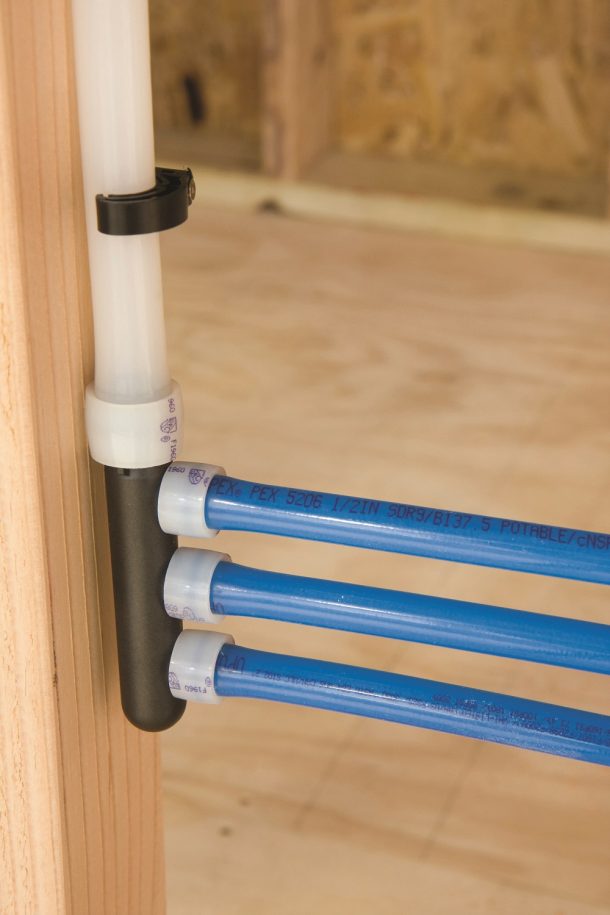
Make Maintenance Easier
Some specific design choices can significantly reduce upkeep efforts, ensuring your bathroom and kitchen remain functional.
For example, you can install access panels for hidden utilities, such as plumbing valves or electrical boxes. So, when repairs are needed, you can easily reach what needs fixing without the hassle of cutting into walls.
Opting for fixtures with modular components also allows for straightforward part replacement. If a piece breaks, you can swap it out without dismantling the entire fixture, saving time and cost.
Additionally, compared to a prefabricated unit, a tiled shower base also offers simpler repair and cleaning opportunities, especially with a removable tile insert at the drain, avoiding extensive demolition for simple issues.
Lastly, you can opt for smart leak detectors, which provide an early warning system for water leaks. These devices prevent potential water damage and facilitate prompt repairs.
Planning for Upgrades
Design your plumbing with future upgrades in mind. Opt for modular components that can be easily adjusted or expanded. Anticipate advancements in technology and potential lifestyle changes. This could mean preparing spaces for smart home water systems or additional fixtures.
Such foresight adds value to your home, ensuring it remains adaptable and up-to-date. This also facilitates the integration of new technologies to accommodate evolving household needs.
Wrapping Up
The right plumbing choices allow homeowners to create spaces that are beautiful, efficient, sustainable, and ready to grow with them. Considering these essential tips, renovators can ensure their projects meet current needs and adapt to their lifestyles. Whether you’re a fan of DIY projects or planning to bring in professionals, these expert suggestions will help you have a successful renovation project that stands the test of time.
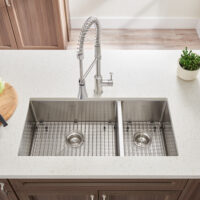
That stainless steel bathrooms are elegant is not in question. We see them in establishments and homes of all kinds, a testament to their wide acceptance. But there’s another side to this material, one that’s equally remarkable. If you value environmental preservation, you’ll be pleased to know that, beyond its beauty and elegance, stainless steel Read more
That stainless steel bathrooms are elegant is not in question. We see them in establishments and homes of all kinds, a testament to their wide acceptance. But there’s another side to this material, one that’s equally remarkable.
If you value environmental preservation, you’ll be pleased to know that, beyond its beauty and elegance, stainless steel is a notable driver of ecofriendliness. Below, we’ll discuss how stainless steel promotes sustainability and how buying stainless steel bathroom sinks contributes to sustainable living.
How Stainless Steel Bathroom Sinks Promote A Sustainable Lifestyle
So, what green reasons do you have to opt for stainless steel bathroom sinks? Quite a number, as it turns out. Here are the different ways choosing stainless steel over other materials for your bathroom sinks boosts sustainability.
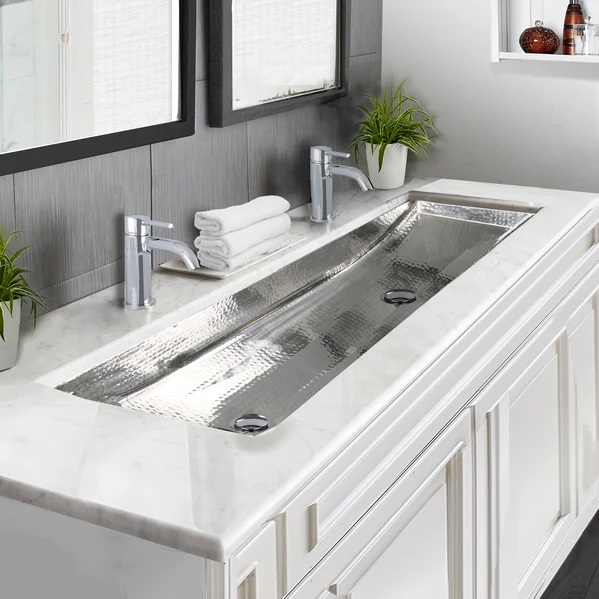
They Are 100% Recyclable
No other metal matches stainless steel recyclability. The material is 100% recyclable, making it the most recyclable metal in the world. At least 85% of all stainless steel used in the home and architecture market, where bathroom sinks fall, is recyclable. Unrecyclable stainless steel bits can be used as raw materials for making other products, so nothing goes to waste.
Goes to show that anyone keen on embracing a sustainable lifestyle should make stainless steel one of their materials of choice for many products. At the home front, we have various stainless steel sinks, options anyone can use to make this goal a reality. You can start at the bathroom—with sinks, vanity sinks, and faucets.
Miners Source Stainless Steel Raw Materials Responsibly
To create stainless steel, manufacturers use a combination of:
- Iron
- Carbon
- At least 10% chromium
- Nickel
- And several other elements.
All stainless steel components are mined responsibly and do not require excessive resources. For example, iron is the fourth most abundant element on the Earth’s crust, while nickel is the fifth. There is little risk of exhausting the two, but that does not mean all caution goes to the wind while sourcing these minerals.
Manufacturers use the same caution and care when sourcing less abundant components, such as chromium and carbon. Indeed, stainless steel manufacturers are bound by the sourcing and best practice guidelines set by regulatory bodies such as the International Chrome Development Institute.
The Mining Policy Framework by the Intergovernmental Forum on Mining (IGF) also outlines a comprehensive path towards sustainable development through efficient mining. Stainless sink manufacturers operating in IGF member states must follow the mining regulatory framework laid down to work towards IGF’s sustainable development objectives.
Mining Stainless Steel Compounds Does Not Produce Toxic Run-Off
None of the elements used to make stainless steel produce toxic mine drainage. Runoff from stainless steel production:
- Is not toxic
- Does not react with other elements to form dangerous compounds
- Does not dissolve toxic elements, causing them to seep into groundwater
- Does not harm plant or animal life
- Does not corrode items it comes into contact with.
Additionally, all stainless steel constituent metals have low toxicity and are not known to harm the environment.
They Do Not Require Surface Coating
Bathroom sinks and faucets made out of stainless steel do not require any surface coating. The steel is simply given a finish, usually satin, mirror luster, or brushing. But no product is added to create that final metallic look.
The problem with coatings is that they deteriorate over time. As they break down, they mix with the water running through the sink, polluting it. Some compounds in the coating may be toxic, causing harm to organisms that come in contact with the water. Using stainless steel sinks eliminates this risk.
They Are Durable
Many experts agree that stainless steel is among the most durable materials. The average stainless steel sink lasts between 15 and 30 years, a lifetime by industry standards. You can ward off rust and increase the lifespan by taking good care of the sink.
This longer lifespan means you’ll not replace the sink for a long time. Instead, you’ll have decades of worry-free use to enjoy your beautiful fixture. What pro-sustainability action could be better than this for a homeowner?
They Are Corrosion-Resistant
Chromium gives stainless steel bathroom sinks built-in corrosion resistance.
- Corrosion lowers the quality of life, as corroded material pollutes the air and seeps into water and soil, affecting plants, animals, and humans alike.
- Corroded metals destroy tools and equipment and shorten the lifespan of any product they touch. As a result, individuals, companies, and governments are forced to repair and replace affected products earlier than they should have.
- Beyond the high financial cost, this rust burden causes a fast depletion of natural resources as producers need more metals to make replacement products.
Final Thoughts
Replacing your bathroom sink materials with stainless steel is a practical and affordable way of supporting global sustainability efforts. The material has low toxicity and has little to no environmental harm. It also lasts long, meaning it consumes little natural resources.
